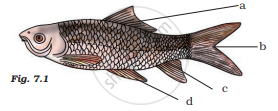Topics
Heredity and Evolution
- Heredity or Inheritance
- Protein Synthesis
- Transcription, Translation and Translocation
- Protein Synthesis
- Protein Synthesis
- Organic Evolution
- Theories of Origin of Life
- Evolution and Classiffication
- Evidences for Biological Evolution
- Darwinism
- Lamarck’s Theory of Evolution
- Speciation
- Human Evolution
Life Processes in Living Organisms Part -1
- Living Organisms and Life Processes
- Living Organism and Energy Production
- Formation of ATP
- Energy Production in Living Organism
- Cell Division: an Essential Life Process
- Mitosis and Its Phases
- Phases of Mitosis: Karyokinesis (Division of Nucleus)
- Phases of Mitosis: Cytokinesis (Division of Cytoplasm)
- Significance of Mitosis
- Meiosis as a Reduction Division
- Stages of Meiosis: Meiosis I
- Stages of Meiosis: Meiosis II
- Significance of Meiosis
- Differences Between Mitosis and Meiosis
Life Processes in Living Organisms Part - 2
- Introduction to Life Processes in Living Organisms
- Asexual Reproduction in Animal
- Fission
- Fragmentation
- Regeneration
- Budding
- Sporulation (Sporogenesis)
- Asexual Reproduction in Plant
- Budding
- Vegetative Reproduction
- Reproduction
- Sexual Reproduction in Flowering Plants
- Sexual Reproduction in Animals
- Human Reproduction
- The Male Reproductive System
- The Female Reproductive System
- Gametogenesis
- Fertilization in Human
- Embryonic Development in Human
- Implantation in Human
- Pregnancy in Humans
- Placenta (Growth) in Human
- Parturition (Birth) in Human
- Menstrual Cycle (Ovarian Cycle)
- Reproduction and Modern Technology
- Reproductive Health
Environmental Management
- Our needs and the Environment
- Ecosystem
- Structure and function of an Ecosystem
- Relationship Between Environment and Ecosystem
- Environmental Balance
- Environmental Conservation
- Environmental Conservation and Biodiversity
- Endangered Species
Towards Green Energy
- Energy and Use of Energy
- Generation of Electrical Energy
- Heat Energy (Thermal Energy)
- Nuclear Energy
- Natural Gas Energy
- Electric Energy Generation and Environment
- Hydroelectric Energy
- Wind Energy
- Solar Energy
- Solar Energy
Animal Classification
- Biological Classification
- Classification of Living Organisms
- Taxonomic Hierarchy of Living Organisms: Unit of Classification
- New Criteria for Basis of Classification
- History of Animal Classification
- Traditional Method of Animal Classification
- Five Kingdom Classification
- Phylum: Porifera
- Phylum: Cnidaria/Coelenterata
- Phylum: Platyhelminthes
- Phylum: Aschelminthes
- Phylum: Annelida
- Phylum: Arthropoda
- Phylum: Mollusca
- Phylum: Echinodermata
- Phylum: Hemichordata
- Phylum: Chordata
- Kingdom Animalia
- Chordata: Vertebrata
Introduction to Microbiology
- Microorganisms (Microbes) and Microbiology
- Applied Microbiology
- Industrial Microbiology
- Useful micro-organisms
Cell Biology and Biotechnology
- Cell Biology (Cytology)
- Stem Cells
- Organ Transplantation
- Organ and Body Donation
- Biotechnology
- Commercial Applications of Biotechnology
- Modern Agricultural Practices and Crop Improvement
- Important Stages in Agricultural Development
Social Health
- Social Health
- Factors Disturbing the Social Health
- Communication Media and Excessive Use of Modern Technology
- Stress Management
Disaster Management
- Disaster
- Effects of Disaster
- Nature and Scope of Disaster
- Disaster Management
- Classification of Disaster Management
- Disaster Management Cycle
- Structure of Disaster Management Authority
- First Aid and Emergency Action
- Mock Drill
Life's Internal Secrets
The Regulators of Life
- Coordination in Plants - Introduction
- Control and Co-ordination in Plants
- Human Nervous System
- Central Nervous System (CNS)
- Chemical Control
The Life Cycle
Mapping Our Genes
Striving for Better Environment 2
- Use of Efficient and Eco-friendly Technology
- Sustainable Use of Resources
- Enforcement of Acts, Laws and Policies
Understanding Metals and Non-Metals
Amazing World of Carbon Compounds
Taxonomic Hierarchy of Living Organisms: Unit of Classification:
A hierarchy is formed in the classification that starts with Kingdom Animalia or Kingdom Plantae; further groups and subgroups are formed depending upon basic similarities and differences. This is called the ‘hierarchy of classification.’
| Hierarchy | Mango | Human |
|---|---|---|
| Kingdom | Plantae | Animalia |
| Phylum | Anthophyta | Chordata |
| Class | Dicotyledonae | Mammalia |
| Order | Sapindales | Primates |
| Family | Anacardiaceae | Hominidae |
| Genus | Mangifera | Homo |
| Species | indica | sapiens |
| Level | Description | Example |
|---|---|---|
| Genus | A group of similar species. Species within the same genus share characteristics but cannot interbreed. | House crow (Corvus splendens) and hill crow (Corvus macrorhynchos) belong to the same genus, Corvus. |
| Family | A group of related genera that share common characteristics. | Lion (Panthera leo) and tiger (Panthera tigris) belong to the genus Panthera, and together with the domestic cat (Pelis), they form the cat family (Felidae). |
| Order | A group of related families. | The cat family (Felidae) and dog family (Canidae) form the order Carnivora. |
| Class | A group of related orders. | The order of dogs, cats, bats, whales, monkeys, and humans forms the class Mammalia. |
| Phylum | A group of related classes. | The classes of mammals, birds, reptiles, frogs, and fishes make up the phylum Chordata (animals with a notochord or backbone). |
| Kingdom | The largest division in the classification of living beings, consisting of related phyla. | All animals (including mammals, birds, reptiles, etc.) belong to the kingdom Animalia. |
If you would like to contribute notes or other learning material, please submit them using the button below.
Video Tutorials
Shaalaa.com | Biology Diversity in Living World part 8 (Taxa, taxanomy, Hierarchical) CBSE class 11 XI
to track your progress

